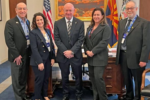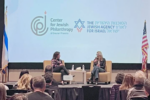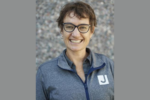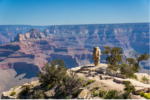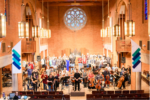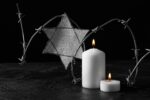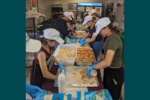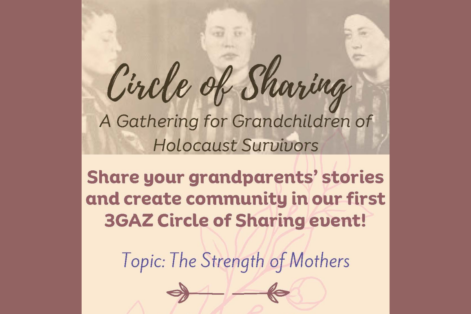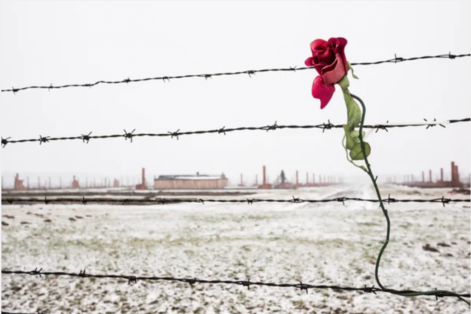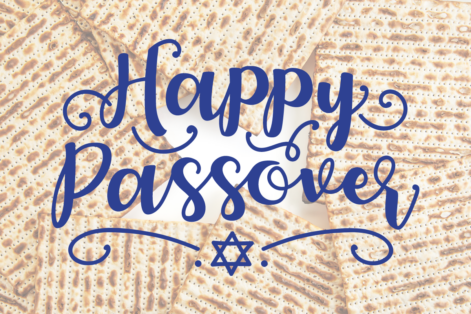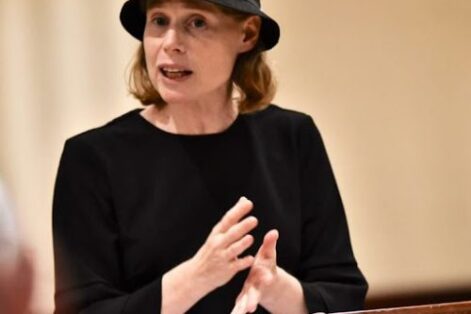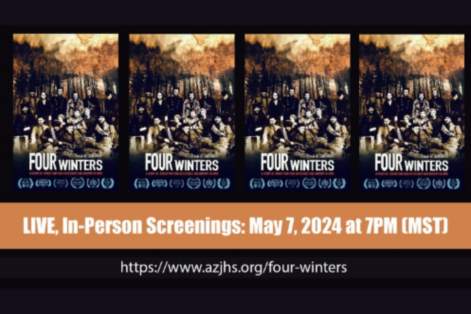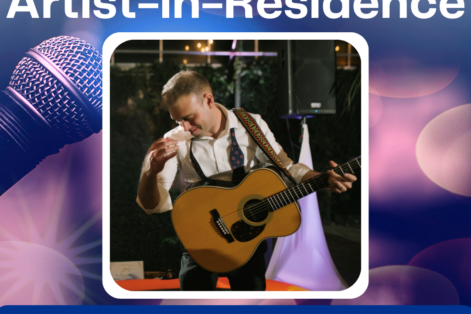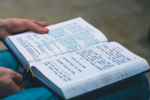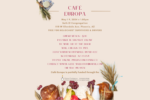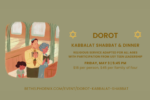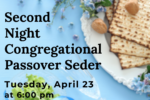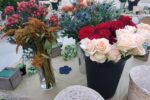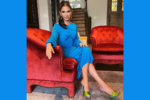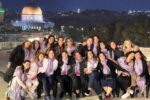Author: Shannon Levitt
(Jewish News) When Temple Chai Rabbi Bonnie Koppell arrived in Arizona in 1987, people were shocked that she was a rabbi. She was the first woman rabbi in the state. Many times, she heard the words, “I didn’t know that women could be rabbis,” she told Jewish News.
“I grew up in an era when there were no women rabbis,” Koppell said. “I was ordained in 1981. Women rabbis were a novelty at that time. I wondered when the time would come that women would simply be rabbis, and not ‘women rabbis.’ I wonder if we are there yet?”
Next year, Rabbi Sally Priesand will celebrate her 50th anniversary as the first publicly ordained woman rabbi in the United States. The year Priesand entered rabbinical school, Koppell was 11 years old and knew she wanted to be a rabbi, too.
Now, Koppell is one of several women rabbis in and around Greater Phoenix. “When the women rabbis in Phoenix meet, there might be a dozen of us at the table,” she said. And in honor of the 50th anniversary, a dozen of them offered a few reflections, personal anecdotes and thoughts on the challenges that remain.
Rabbi Nina Perlmutter told Jewish News that “it seems important to note the history and significance” of Priesand’s anniversary because “today, so many communities take it as a ‘given’ that women can be rabbis.”
Perlmutter, the emerita rabbi of Congregation Lev Shalom in Flagstaff, suggested that highlighting the anniversary, “helps inspire older folks — especially women — about how things have changed positively since they were young.” Conversely, it also “helps expand expectations and possibilities young people have.”
Jewish Community of Sedona and the Verde Valley Rabbi Alicia Magal recalled that when she was in school “there was not yet one female rabbi; though I enjoyed going to synagogue, it never occurred to me that I could be the one on the pulpit.”
New Shul Rabbi Elana Kanter offered that she “feels extremely fortunate to be living in an historical moment when women are rabbis,” a feeling that’s particularly acute when she thinks about a Talmudic figure like Beruriah, “an extremely learned woman who had no place or context in which to offer her Torah,” thousands of years ago.
Rabbi Mindie Snyder, chaplain and rabbi of Sun Health Communities, reflected that “given the thousands of years of Jewish history where women held positions of leadership and authority, it is especially interesting that women’s admission into rabbinic seminaries was so fraught with debate and took as long as it did.
“Because we live in a place and time of accelerated transitions, women in the rabbinate are simultaneously tasked to be agents of positive innovations, forces of stability, multicultural and multilingual.”
Congregation Beth Israel Rabbi Sara Mason-Barkin reminded Jewish News that in 1972, the year Priesand was ordained, email and Egg McMuffins were also introduced.
“While the world has changed dramatically in ways that we never could have anticipated since the 1970s, no one seems to doubt the legitimacy of email or an egg McMuffin. And yet, as a woman who is a rabbi I am often greeted with surprise, confusion or even delight by those who didn’t know that women rabbis existed.” At times, her gender is pointed to as a positive, especially when it comes to being a good role model for children.
But it’s still a liability to some, she wrote. “It can be challenging to command authenticity when there is still a large percentage of Jews who don’t believe that women can be rabbis, even though we are.”
Temple Solel Rabbi Debbie Stiel thought a lot about the upcoming anniversary as she prepared for her installation ceremony in November. Her sermon detailed women’s big historical moments in Judaism, in the rabbinate and highlighted some of her own experiences, as well.
She recounted a time when she and another female rabbinic student attended a minyan in “a synagogue that was somewhere between Conservative and Orthodox in its practice.” The male members said they were two short of a minyan. “There were actually 10 of us in the room,” Stiel continued, “but two of us were women.” Both she and her friend felt invisible.
“I don’t think of myself as a pioneer, but when I was ordained in 1994, I became the first woman rabbi in the city of Omaha. I was then the first woman rabbi in Lincoln, Nebraska, and the first in Topeka, Kansas,” she wrote. Every synagogue she worked in had “at least one person who did not want me hired simply because I was a woman.” Still, she has felt “overwhelming” support from each of her synagogue’s members.
Congregation Beth El Rabbi Nitzan Stein Kokin celebrates Priesand’s anniversary, too, while drawing attention to German Rabbi Regina Jonas, another woman pioneer — one who has been overlooked due to historic political circumstances. Jonas was privately ordained by the leader of the German Reform movement in 1935 and was able to work because so many rabbis had emigrated or been arrested and deported by the Nazis. Jonas died in Auschwitz in 1942. Her rabbinic thesis about ordaining women is archived in Berlin and was rediscovered after the fall of the Berlin Wall, Stein Kokin said.
“While I am happy to acknowledge 50 years of women in the rabbinate in America, I feel that we should honor those predecessors of the ‘20s and ‘30s. We are looking more at a history of about 100 years of women serving as ‘rabbis’ or in clergy roles,” she told Jewish News.
Rabbi Julie Kozlow, a community rabbi in Prescott, said she entered the rabbinate “because of a powerful calling that has held me in its grip — to serve the highest good, to guide people through Jewish wisdom and ethics.” But she also told Jewish News that 2021 represents a “pushback” and “a digging in of the dominant structures of the past.
“The patriarchy is alive and well and fighting to get back its lost territory. We rabbis who are women are on those frontlines and it’s a difficult place to manage, but manage we do, for we are the change agents for our times. It is both a privilege and a struggle. I was not prepared to be judged for my gender, I assumed I would be judged for my love of God, my love of Judaism, my love of ethics and my passion for humanity. The most glaring challenge for me as a woman rabbi is to realize how much misogyny still exists in our world, Jewish and secular.”
Rabbi Aviva Funke, community rabbi and principal of Bureau of Jewish Education of Greater Phoenix’s Hebrew High, wrote that men have left shiva minyanim that she led, and she struggles to embrace classical Jewish literature “due to the sexism and disregard for women’s rights and ability to learn.” While the Talmud and Mishnah are ancient, she wrote that she still has difficulty teaching texts “that would never even consider embracing me, my role in the community or others.”
Stein Kokin, too, wrote that Judaism’s sacred texts “have an androcentric patriarchal perspective. In Hebrew, it is very hard to formulate descriptions of or prayers to God, for example, in a non-binary or gender neutral way.” She added that “in liturgy women’s voices and authorship are still in the making.”
Rabbi Suzy Stone, campus rabbi for Hillel at Arizona State University, was part of the Hebrew Union College-Jewish Institute of Religion’s ordination class in Los Angeles in 2012, which marked the 40th anniversary of women in the rabbinate.
Because she had female-identified role models in the rabbinate growing up, she wrote, “becoming a rabbi wasn’t really about challenging the status quo or fighting for gender equality. What I’ve realized during my time at ASU Hillel is that not all women, even today, have (female role models). One of the best parts of being on campus is that I am humbled to be a role model to all the young Jewish men, women and non-binary students who are encountering a form of Judaism that encourages them to embrace their modern identities alongside our ancient traditions and rituals.”
In terms of ritual and liturgy, Kanter pointed out that “whole areas of Jewish scholarship have only been opened up because of women scholars and rabbis.” She said there are aspects of the arts, music, literature and creative forms of expression, which “have only been made possible because of the presence of women rabbis, artists and teachers. Women’s leadership has added immeasurably to the richness of Jewish life and experience around the world.”
Koppell, too, wrote that “women have crafted liturgy that men and women alike find meaningful, and women’s commentaries on Jewish texts have deeply enhanced our perspective on the tradition.”
She listed examples like communal baby-naming ceremonies for girls, ceremonies for menarche, menopause and miscarriages, as well as Rosh Chodesh — celebrations of the new moon.
Magal noted that her gender and life experience, having come to the rabbinate later in life, allowed her to be “freer to break with traditional ‘decorum’” than male colleagues might be.
To that end she has brought her “own sensitivity, style, and point of view” to her work.
“I have yodeled for a Swiss hospice patient and made him smile; I wore cowboy boots at a western themed wedding; I matched my tallit to the color scheme of a bride’s wedding decor; I have danced around the room to classical music to cheer up a chair-bound woman who used to have great physical flexibility and who was angry at her limitations. I bring who I am to each encounter, and don’t feel so bound by the image of ‘rabbi.’”
While some women rabbis spoke of having a lot of support for their career choice, others were discouraged and had to persevere on their path.
Perlmutter, for example, said her parents were “assertively secular” and “her decision to become a rabbi made them proud, but very surprised, and even confused.”
Kanter, on the other hand, said her family “takes rabbis as a given, while lawyers and doctors are exotic.” Her father, brother and husband are also rabbis.
When Stiel told her mother about her choice, “she told me she did not think it was a good field for a woman. ‘Why?’ I asked. ‘As a rabbi, there will be times you have to go to the hospital in the middle of the night or be out late with meetings, it will be hard if you are raising a family.’”
Mason-Barkin’s parents were very supportive. They met while her father was studying to be a rabbi and her mother was studying to become “the kind of educator who will create a Mount Sinai experience in the synagogue sanctuary complete with dry ice, flickering lights and the voice of God coming over the sound system.”
Her father “has always been, for me, what a rabbi looks and sounds like. I hear his voice coming out of my mouth when I read certain prayers — slow and steady.” With their support, she wrote, “I have become my own version of what a rabbi looks, sounds and teaches like.”
Congregation Kehillah Rabbi Bonnie Sharfman came from an Orthodox family and was “raised to be a good rebbetzin,” she said. “I didn’t marry a rabbi, didn’t even come close.” Instead, she represents “the 37th generation of my family to receive smicha (ordination), the first woman and first non-Orthodox — but still very tradition-conscious — member.”
While she didn’t have the support of her extended family, her father was very supportive, she told Jewish News. “As a child, he would sit and teach me Torah, then Mishna, Pirke Avot, Shulchan Aruch and Gemara. He told me that I could do anything in life that I set my mind to, although I am fairly certain that this was not anything that he — or I — foresaw. My father was years ahead of his time, and his influence and support, as well as his determined challenges to me, have played a priceless and unquantifiable role in my rabbinate. He was incredibly proud of me, and his family did attend the celebration at a kosher restaurant in Los Angeles, although not the ordination ceremony itself.”
With no female rabbis as role models, “it did take time and struggle to find my own authentic voice. While I enjoyed my career in education and did not tire of it, there was a powerful and undeniable internal pull that urged me on in this direction. Cognitively, it made no sense; emotionally and spiritually, there was no other path.”
In terms of continued challenges in the rabbinate, several rabbis pointed out disparities in pay for women, discussed challenges involving family responsibilities and offered examples of continued biases as basic as having to remind people to call them “Rabbi” just as they would male counterparts.
Stein Kokin called “the question of authority” a big issue going forward. “Female rabbis have to work harder and have to be more perfect in order to receive the same kind of compensation, to gain leadership roles and to be awarded the same kind of respect (authority) as our male colleagues.”
Funke called “disharmony between the denominations” the biggest problem for women and asked, “How is it that women at the Kotel still can’t celebrate Rosh Chodesh in peace? Why is it that Conservative/Reform/non-Orthodox rabbis still can’t officiate weddings in Israel?”
But she, like most, finds a lot to be hopeful about. She wrote that the connection among women rabbis and their networks is a blessing, and said that working together on these issues makes her hopeful. “And personally,” she wrote, “I love being in a position that breaks stigmas.”
Snyder, too, hit a hopeful note when she recalled a moment following a Shabbat service she led. A congregant told her that her 3-year-old daughter said, “‘When I grow up, I want to be a rabbi like Rabbi Mindie.’ And in the blink of an eye, a little girl had a new dream for her future and a new generation of Jewish religious leaders is blossoming because it is possible for women to serve as rabbis.”
Not long ago, Koppell was reading a book to Temple Chai’s early childhood class that had as its protagonist a woman rabbi. At first, she thought she would point out how notable that was. But she stopped herself. To those children, who had known nothing but a woman rabbi, it was no novelty at all.
This article was originally posted on Jewish News.
This post has been contributed by a third party. The opinions, facts and any media content are presented solely by the author, and JewishPhoenix assumes no responsibility for them. MORE







